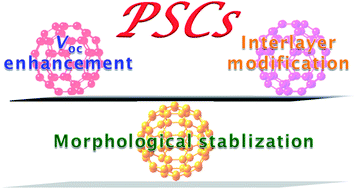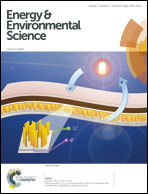Applications of functional fullerene materials in polymer solar cells
Abstract
Bulk heterojunction (BHJ) polymer solar cells (PSCs) on the basis of polymer:fullerene blends have delivered numerous impressive results in the last decade and thus have drawn much attention of the scientific and industrial communities. However, BHJ PSCs often suffer from several intrinsic problems, such as the low open-circuit voltage (Voc), energetically-unfavorable and chemically-incompatible interfaces, and morphological phase separation of the polymer:fullerene blend driven by thermal treatment, hindering further advancement. In this review, we summarize the recent progress on applications of fullerene-based materials in the BHJ PSCs. Bis-adduct fullerenes possessing high-lying LUMO energy levels can substitute for mono-substituted fullerenes and higher Voc values can thus be achieved. Incorporation of an n-type fullerene interlayer between inorganic and organic active layers in either inverted or conventional PSCs can help in minimization of charge recombination losses at the interface and improvement of charge transfer from the active layer to the inorganic layer, thus resulting in superior PCEs. The optimal active-layer morphology can be maintained through several approaches, such as in situ polymerization of cross-linkable fullerenes, suppression of large-scale PC61BM aggregation by a polyethylene glycol-functionalized fullerene, supramolecular pentafluorophenyl-fullerene stabilization, and light-induced oligomerization of fullerenes. The morphological phase separation of the active-layer materials can thus be minimized. The research of employing fullerene materials will continue playing a critical role in BHJ PSCs. With further investigation and advancement in this field, it is expected that the ultimate goal of commercialization can be realized.


 Please wait while we load your content...
Please wait while we load your content...